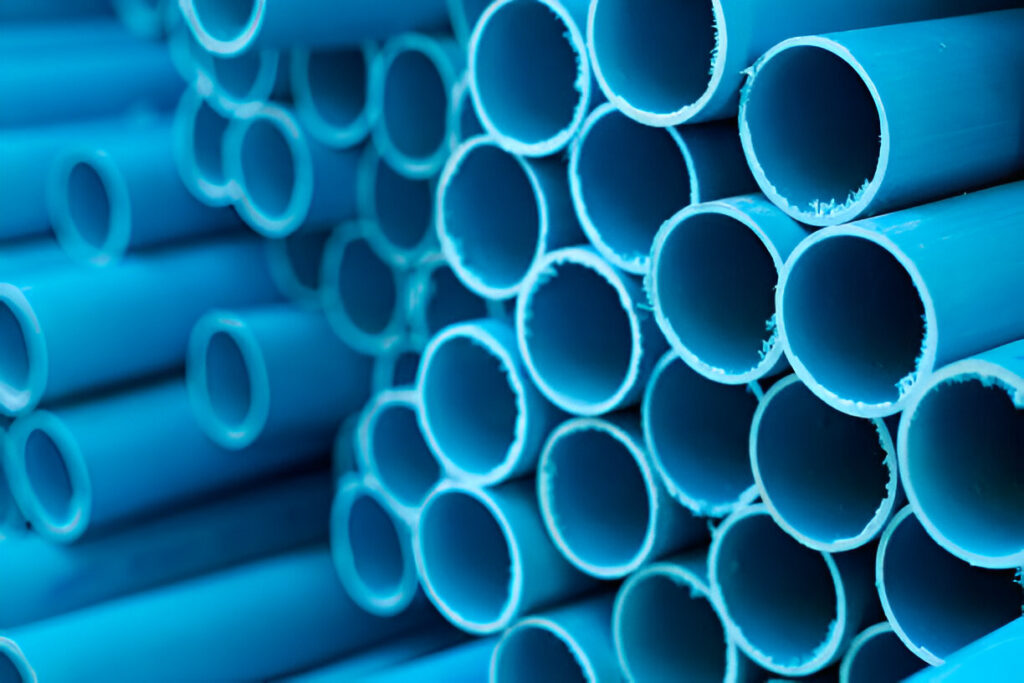Plastic pipes have become a staple in modern plumbing, irrigation, and industrial applications due to their affordability, flexibility, and corrosion resistance. But just how durable are they? While plastic pipes offer significant advantages over traditional metal options, their longevity and strength depend on factors such as material type, environmental conditions, and maintenance. In this post, we’ll explore the durability of plastic pipes, their benefits, potential weaknesses, and how to maximize their lifespan.
Understanding Plastic Pipe Materials
Not all plastic pipes are created equal. Different types of plastic pipes serve distinct purposes and have varying durability levels. The most common materials include:
- PVC (Polyvinyl Chloride): One of the most widely used plastic piping materials, PVC is known for its durability, chemical resistance, and low cost. It is commonly used in drainage, sewage, and irrigation systems.
- CPVC (Chlorinated Polyvinyl Chloride): A more heat-resistant version of PVC, CPVC is suitable for hot water systems and industrial applications.
- PEX (Cross-linked Polyethylene): Known for its flexibility and resistance to freezing temperatures, PEX is often used in residential plumbing systems.
- HDPE (High-Density Polyethylene): Highly durable and resistant to impact and corrosion, HDPE pipes are commonly used for water and gas distribution.
- PP (Polypropylene): A tough and heat-resistant material, polypropylene pipes are ideal for high-temperature applications and chemical drainage systems.
Each type of plastic pipe has unique durability characteristics, making it essential to choose the right material for the intended use.
Advantages of Plastic Pipes in Durability
Plastic pipes offer several durability-related benefits that make them a preferred choice over metal alternatives:
1. Corrosion Resistance
Unlike metal pipes, plastic pipes do not rust or corrode over time, making them ideal for water supply systems and chemical applications. This resistance to degradation extends their lifespan significantly.
2. Flexibility and Impact Resistance
Certain plastic pipes, such as PEX and HDPE, can withstand high impact without cracking or breaking. Their flexibility also helps them endure stress, making them more resistant to damage from external forces like soil movement or freezing temperatures.
3. Chemical and Moisture Resistance
Plastic pipes are highly resistant to chemicals and moisture, preventing issues such as scaling, mineral buildup, and chemical reactions that can weaken traditional metal pipes.
4. Lightweight and Easy Installation
The lightweight nature of plastic pipes reduces stress on plumbing systems and makes them easier to install. Unlike metal pipes, which can develop weak points due to welding or soldering, plastic pipes typically use secure joining methods such as solvent cementing, heat fusion, or push-fit connections.
5. Long Lifespan
When installed and maintained properly, plastic pipes can last anywhere from 50 to 100 years. For example, PVC pipes have an estimated lifespan of 50-70 years, while HDPE pipes can last over 100 years in optimal conditions.
Factors That Affect the Durability of Plastic Pipes
While plastic pipes are highly durable, certain factors can impact their longevity:
1. Exposure to UV Light
Some plastic pipes, especially PVC, degrade when exposed to direct sunlight for extended periods. This can lead to brittleness and cracking. To prevent UV damage, pipes should be buried, painted, or covered with protective insulation.
2. Extreme Temperatures
Plastic pipes have varying resistance to temperature extremes. While PEX handles freezing temperatures well, PVC and CPVC can become brittle in cold weather. Conversely, prolonged exposure to high heat can cause some plastic pipes to soften or warp. Choosing the right material for the temperature conditions is crucial.
3. Chemical Exposure
Although plastic pipes resist many chemicals, prolonged exposure to harsh substances can degrade certain materials. For example, CPVC can handle hot, chlorinated water better than standard PVC. Selecting the appropriate plastic type for the intended application is important.
4. Improper Installation
Incorrect installation, such as using excessive force when tightening fittings or failing to account for expansion and contraction, can reduce a pipe’s lifespan. Following manufacturer guidelines ensures proper installation and enhances durability.
5. Mechanical Stress and Pressure
Excessive pressure or external forces, such as heavy loads on buried pipes, can cause cracking or deformation. Using pipes rated for the required pressure and securing them properly minimizes stress-related failures.
How to Maximize the Lifespan of Plastic Pipes
To ensure the longevity of plastic pipes, consider the following best practices:
- Choose the right type of plastic based on environmental conditions and intended use.
- Protect pipes from UV exposure by burying them or using UV-resistant coatings.
- Follow correct installation procedures to avoid weak points and ensure secure connections.
- Monitor for leaks, cracks, or pressure issues to address problems before they lead to major failures.
- Avoid excessive mechanical stress by securing pipes properly and using flexible materials in high-movement areas.
In Conclusion
Plastic pipes, manufactured using advanced techniques such as extrusion screw technology, offer exceptional durability and reliability for plumbing, irrigation, and industrial applications. Their superior resistance to corrosion, impact, and chemicals makes them a preferred alternative to traditional metal pipes. However, their longevity can be affected by factors like UV exposure, extreme temperatures, and improper installation. By selecting the appropriate material and adhering to best practices, plastic pipes can deliver long-lasting performance, often exceeding 50 years.

